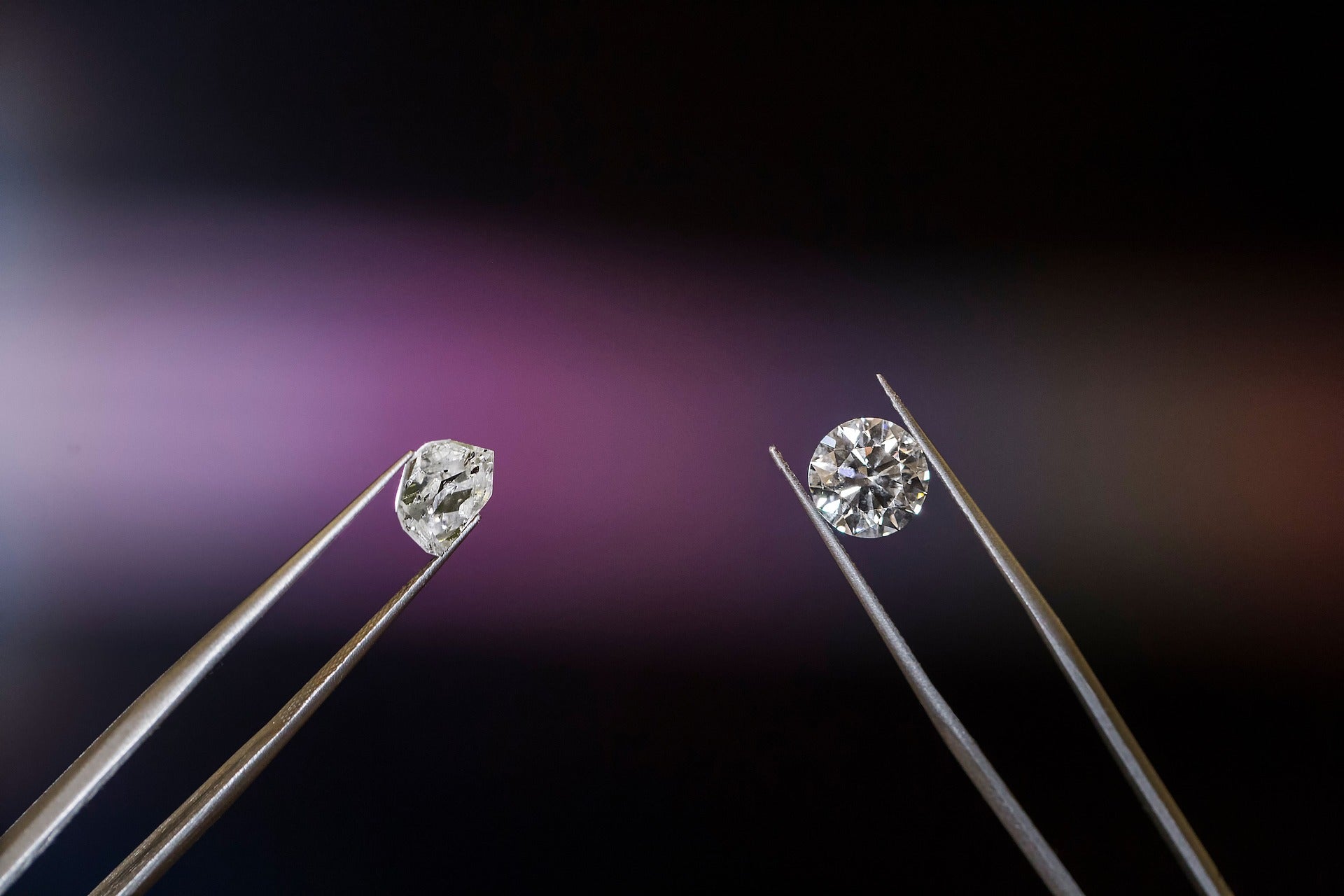| Aspect | Advantages | Drawbacks |
|---|---|---|
| Affordability | More affordable than traditional diamonds. | Perceived as less valuable, affecting resale value. |
| Supply | Can significantly increase diamond availability. | Could negatively impact those in the mined diamond industry. |
| Ethics | No mining required, more ethical source. | Lack of natural diamond imperfections and uniqueness. |
| Quality Control | Controlled environment ensures consistent quality. | Concerns about long-term durability. |
| Environmental Impact | Less land disturbance and chemical pollution. | Production still involves energy use and emissions. |
| Health and Safety | Potential health risks from production processes.(Unconfirmed) |
Introduction
Glistening, awe-inspiring, and dazzling – diamonds have long been a symbol of beauty, luxury, and commitment. But did you know that these precious stones can now be created in a lab? Lab grown diamonds are not only an ethical and sustainable alternative to mined diamonds but also an increasingly popular choice for consumers who are looking for high-quality gemstones at a more affordable price.
In this article, we'll explore what lab grown diamonds are, how they're made, and why they're quickly gaining traction in the world of fine jewelry.

Understanding Lab Grown Diamonds
Lab-grown diamonds, also known as synthetic or created diamonds, are diamonds manufactured in a laboratory through high-pressure high-temperature (HPHT) or chemical vapor deposition (CVD) processes. They have the same physical and chemical properties as natural diamonds, but their production is more environmentally friendly and ethical, as it doesn't involve mining or potential labor issues.
How are Lab Grown Diamonds Made?
It all starts with a tiny carbon seed. In the heart of sophisticated machinery, mimicking the natural diamond formation process, conditions of high pressure and high temperature (HPHT) or a method known as Chemical Vapor Deposition (CVD) are employed to create these marvelous gems. Let's dive deeper into the two primary methods for creating lab grown diamonds.
High Pressure High Temperature (HPHT)
The HPHT method mimics the natural conditions that form diamonds deep within the Earth's mantle. The process involves:
- Placing a small diamond seed (a thin slice of diamond) in a carbon-rich environment.
- Subjecting the seed to extreme temperatures and pressures.
- Allowing the diamond to grow as carbon atoms attach themselves to the seed, forming a larger crystalline structure.
- Chemical Vapor Deposition (CVD)
The CVD method employs a different approach to create lab grown diamonds. The process involves:
- Placing a diamond seed within a vacuum chamber containing carbon-rich gases, such as methane.
- Heating the gas mixture to extreme temperatures, causing the gases to break down into their constituent atoms.
- The carbon atoms are then deposited onto the diamond seed, building up layers and forming a larger crystal.
Both HPHT and CVD processes can produce high-quality lab grown diamonds that are virtually indistinguishable from their mined counterparts. Perhaps you're wondering how lab grown diamonds become ring next, you can read this blog to know: How a Lab-Grown Diamond Ring Is Made at Brillistar.
Advantages of Lab-grown Diamonds
Lab-grown diamonds have several potential advantages over mined diamonds:
- Lower cost - Lab-grown diamonds can be produced at a much lower cost than mining diamonds. This makes them more affordable for consumers.
- Increased supply - Lab-grown diamonds can significantly increase the supply of diamonds available. This helps meet the growing demand for diamonds.
- More ethical - Lab-grown diamonds do not require mining, which can have negative social and environmental impacts. They are considered a more ethical option.
- Higher quality control - Lab-grown diamonds are produced in a controlled environment, allowing for more consistent and predictable quality. All aspects of the diamond can be tailored to customer specifications.
- Similar properties - When produced correctly, lab-grown diamonds have the same physical, optical, and chemical properties as mined diamonds. They are visually and functionally indistinguishable.
-
Environmental benefits - Lab-grown diamonds do not require mining, eliminating the environmental impacts of mining such as land disturbance, chemical pollution, and carbon emissions.

Drawbacks of Lab-grown Diamonds
Here are some of the main potential drawbacks of lab-grown diamonds:
- Perception - Many people still perceive mined diamonds as more valuable, rare, and "real" compared to lab-grown diamonds. This can impact the resale and appreciation potential.
- Traceability - It can be difficult for consumers to verify if a diamond is truly lab-grown or natural. There are some certification processes but they are not foolproof.
- Long-term durability - While lab-grown diamonds have the same physical and chemical properties, there are some concerns about their long-term durability over decades or centuries compared to ancient natural diamonds. More research is needed.
- Impact on the mined diamond market - There are concerns that increased production of lab-grown diamonds could negatively impact miners, cutting and polishing operations, and others employed in the mined diamond industry.
- Lack of imperfection - Some people value the imperfections and uniqueness of natural diamonds since no two are exactly alike. Lab-grown diamonds tend to have fewer imperfections.
- Environmental concerns - Though more environmentally friendly than mining, the process of producing lab-grown diamonds still relies on the use of fossil fuels that produce greenhouse gas emissions.
-
Potential health risks - Though unconfirmed, some have raised concerns about potential health risks from the chemicals used in the CVD process as well as improper disposal of lab-grown diamond manufacturing byproducts. More research is needed.

Conclusion: Get the Right Diamonds!
Lab grown diamonds are, despite lacking of imperfection, the premium fusion of nature's elegance and human ingenuity, providing a sustainable, ethical, and affordable choice without compromising on quality or brilliance. As a tribute to scientific achievement and a testament to love and commitment, these gems are an excellent choice for conscious consumers. We have high hopes for lab grown diamonds, envisioning them as the future of fine jewelry, combining sustainable practices with the timeless beauty of diamonds.


Leave a comment